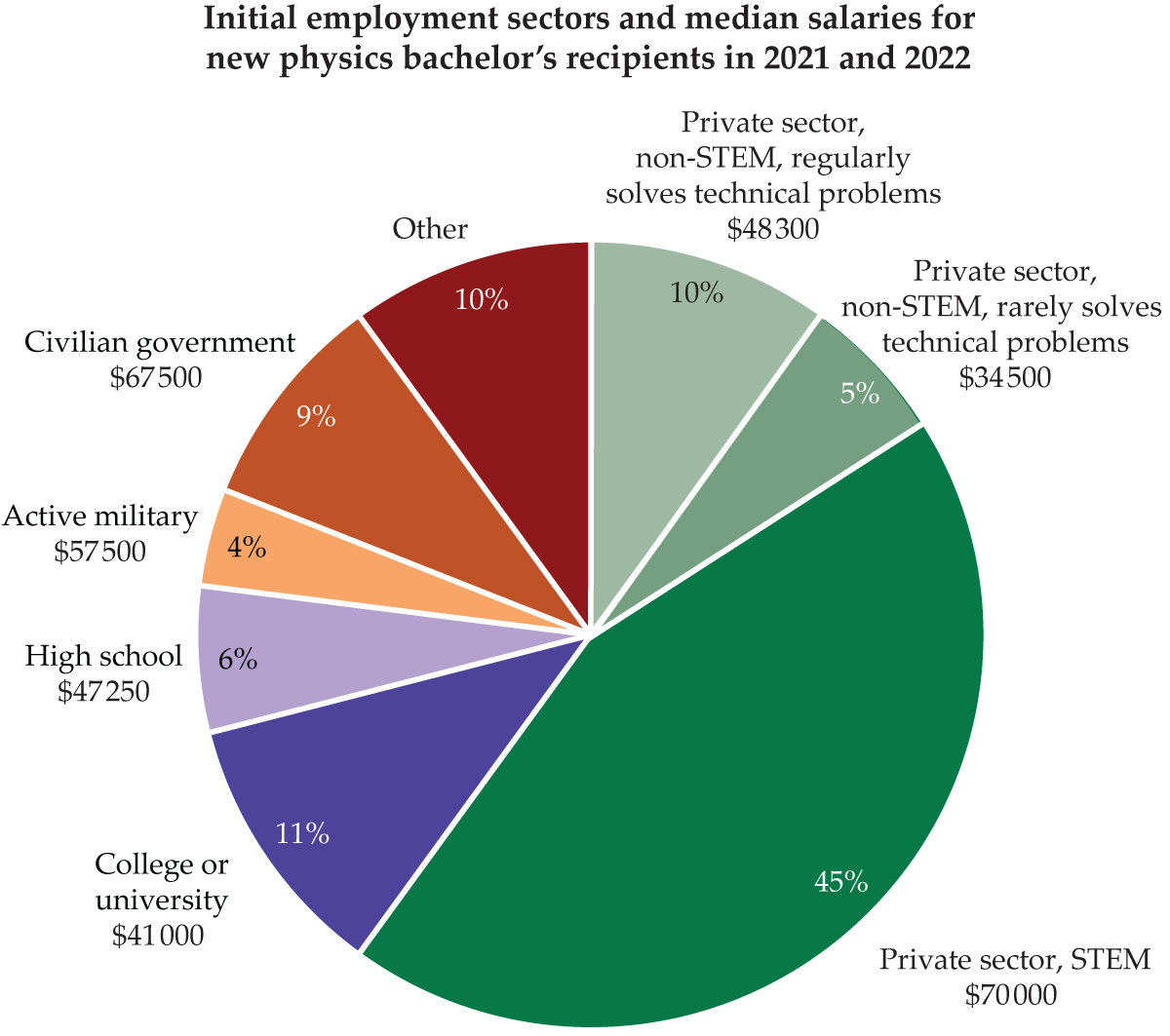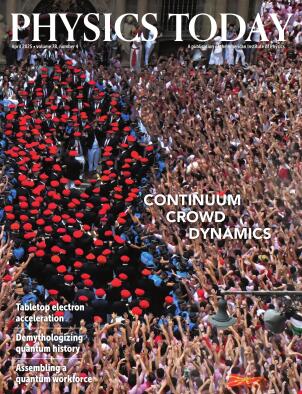Physics bachelor’s holders find jobs in many sectors
DOI: 10.1063/pt.peor.htcc
Just shy of half of US physics bachelor’s degree recipients from the 2021–22 academic year entered the workforce within a year of earning their degree. The other half were enrolled in graduate studies in physics or astronomy (30%), were enrolled in another field (17%), or were seeking employment (4%). The percentage of physics bachelor’s degree earners who enter the workforce immediately after graduating has been trending upward since 2009. Those and related data are available in a report published in January by the statistical research team of the American Institute of Physics (publisher of Physics Today.)
In the combined graduating classes of 2021 and 2022, 60% of physics bachelor’s holders were in the private sector; 11%, in colleges and universities; 9%, in civilian government (including national laboratories); 6%, in high schools; 4%, in the military; and 10%, in other areas (see the chart).

(Figure adapted from J. Pold, P. J. Mulvey, Physics Bachelor’s Initial Employment: Academic Years 2020–21 and 2021–22, AIP Research, 2025.)

In those employment sectors, new degree recipients worked in engineering (27%), computer software (16%), physics or astronomy (11%), and other fields. Starting salaries vary significantly both between and within sectors. The median salary for new physics bachelor’s earners working in the private sector in STEM fields was $70 000; some individuals reported a starting salary of more than $120 000. The median starting salaries for those who work in civilian government was $67 500 and in colleges and universities, $41 000.
The full report, which includes details on salary ranges, job satisfaction, and skills used, can be found at https://ww2.aip.org/statistics/physics-bachelors-initial-employment-booklet-academic-years-2020-21-and-2021-22
This article was originally published online on 3 March 2025.
More about the Authors
Tonya Gary. tgary@aip.org

